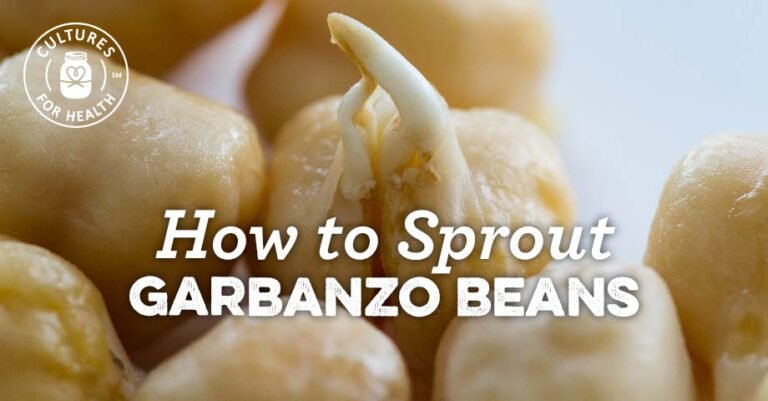Chickpeas, also known as chickpeas or sprouted chickpeas, are small, yellowish, round beans that are notable in Middle Eastern and certain European cooking styles. From a creamy, nutty taste to a meaty texture, its versatile flavor makes it an ideal ingredient for a variety of recipes. Chickpeas or garbanzo beans are one of the easiest beans to germinate or start sprouting chickpeas.
Beans can cause problems with digestion, but sprouting, especially sprouted chickpeas, can help improve digestion in some people.
Sprouted chickpeas have many health benefits. These sprouted beans are rich in vitamins and minerals such as vitamin C, vitamin K, folic acid, and manganese. It’s also high in protein, making it a great addition to vegetarian and vegan meals. Additionally, chickpea sprouts can be used in a wide range of dishes, including salads, sandwiches, and stir-fries, providing a healthy, nutritious crunch.
Preparing to sprout chickpeas, or the beginning of your chickpea sprouting journey
Before you start sprouting chickpeas, keep these germination tips in mind.
The larger the beans, the better they will germinate. Cooler temperatures. keep beans sprouting 68-70°F if possible. For large beans, Increase soaking period and Rinse and drain more often, especially when temperatures are high. If the beans are large, you may not be able to get enough air when draining them. Make sure your germination container allows sufficient ventilation during the drainage period. it is It is normal for the skin to loosen Then it comes off the bean. The skin doesn’t affect the taste, so you can leave it on or remove it. Sprouted beans must be cooked before eating.
Another thing to keep in mind when sprouting chickpeas or other large beans is to pay attention to the quality of the initial beans. Ideally, choose organic beans that are free of pesticides and other chemicals that can interfere with the germination process. Also, older beans tend not to germinate as well as newer beans. Always inspect beans for signs of mold or infestation, which can occur if beans are stored in poor conditions.
Process: How to germinate chickpeas or garbanzo beans
First, wash 1/2 to 3/4 cup of chickpeas, making sure to remove any pebbles, debris, or broken beans. Place these in a quart-sized sprouting jar or other sprouting container.
Next, add 2-3 cups of water to fill the jar three-quarters full and cover with a germination screen ormesh germination lid. Soak the chickpeas for at least 8 hours or overnight. After soaking, drain the chickpeas and wash them thoroughly.
Place the jar at an angle over the bowl to ensure that the beans drain while allowing air to circulate.
Repeat the rinsing and draining process two to three times a day until the shoots or chickpea shoots reach the desired length, usually for about three to four days.
Taste test the sprouts (not the beans) every day. Once the sprouts have reached the desired length and flavor, stop the rinsing and draining process.
Let beans drain for several hours before cooking or transferring to a container with a lid. Sprouts can be stored in the refrigerator for up to a week.
Organic Bean Salad Sprouted Seed Mix combines protein-rich beans and radish seeds to create a delicious meal. More Information A protein-rich meal, sprouts in bean salad sprouted seed mix are a delicious combination on their own. This is a mix containing red beans, mung beans, green lentils, etc.


